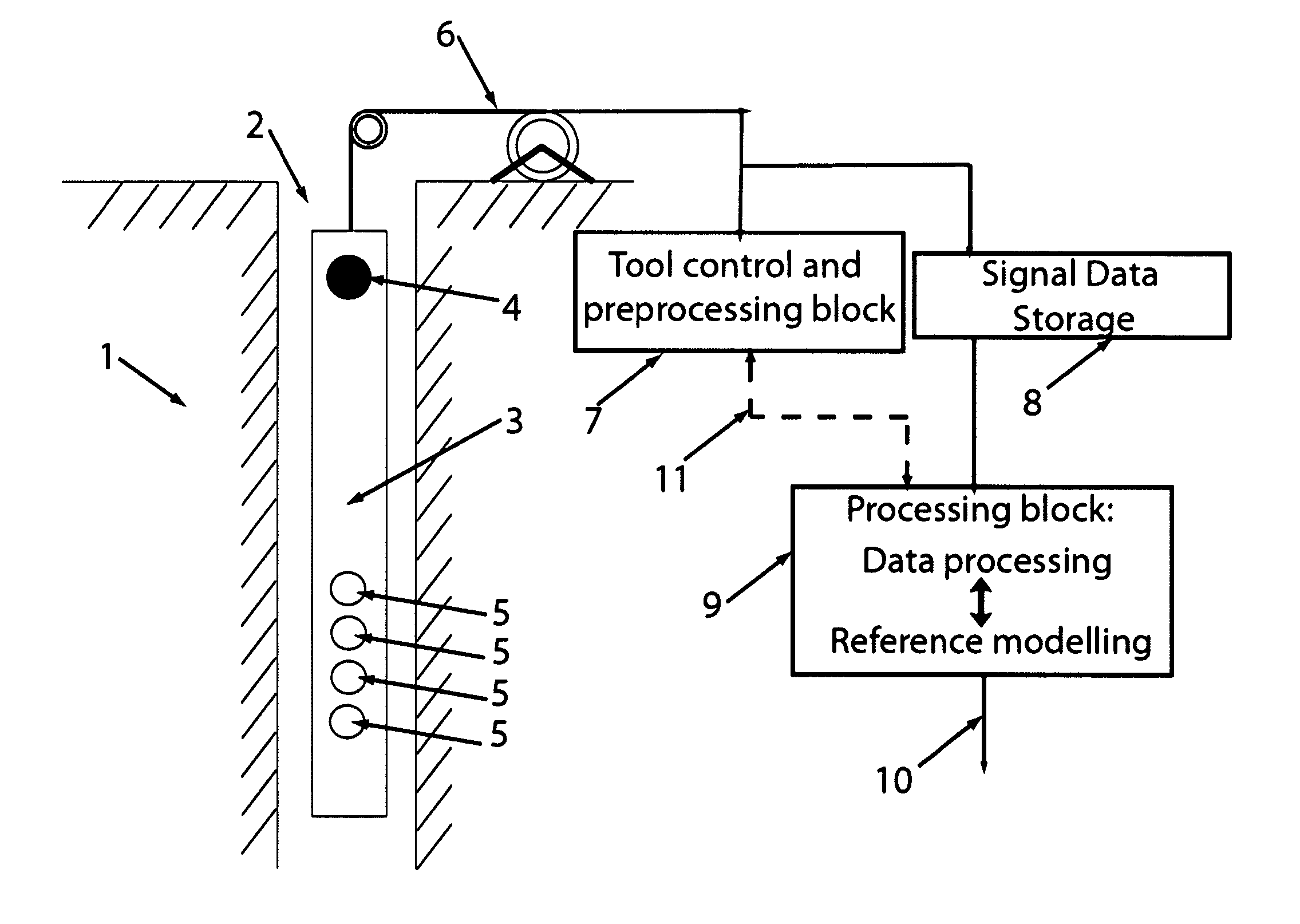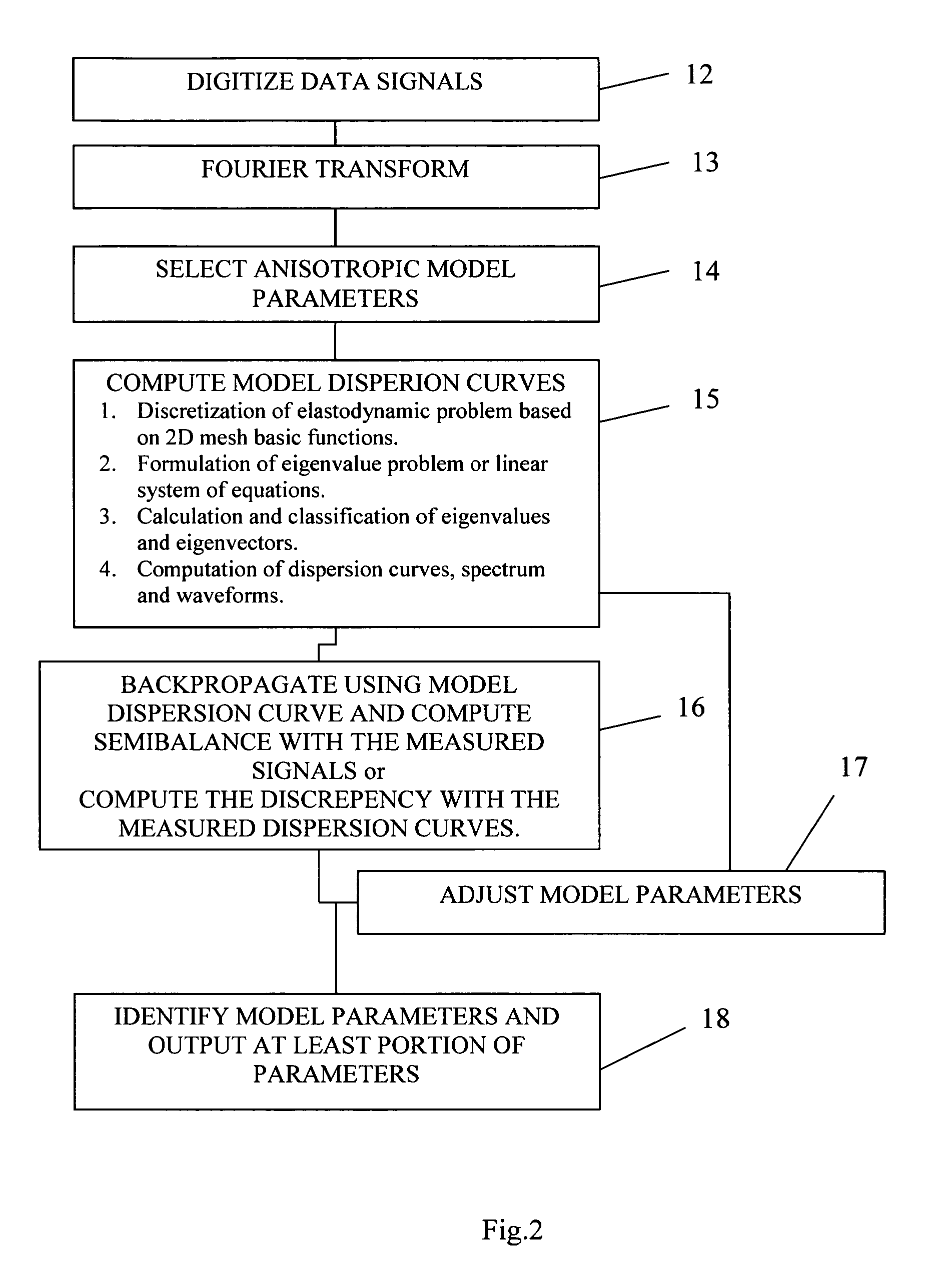Method and system for processing acoustic waveforms
a waveform and processing method technology, applied in the field of acoustic well logging, can solve the problems of inability to meet the requirements of large-scale computing, large computational requirements, and irregular boreholes, and achieve the effect of improving the quality of results
- Summary
- Abstract
- Description
- Claims
- Application Information
AI Technical Summary
Benefits of technology
Problems solved by technology
Method used
Image
Examples
Embodiment Construction
[0012]FIG. 1 shows the general illustration of the measurement by logging tool in a borehole and processing outside it. To study physical properties of a subterranean formation 1 one may drill a borehole 2, which traverses the formation 1. The formation may be inhomogeneous and anisotropic, while the borehole can have a noncircular shape of cross section. In acoustic logging, a tool 3 is lowered into the borehole and acoustic energy is transmitted from transducers 4 into the borehole and the formation. The acoustic waves that travel in the formation are then detected with an array of receivers 5. To push or pull the tool inside the formation 1 and to control its depth a logging / data cable 6 is often used. Through this cable the information about the acoustic signals, measured by the array of receivers 5 can be acquired. This data may flow to a tool control block 7 or to a data storage 8 device. The main goal of the block 7 is to control the tool and environment in the borehole 2 (e....
PUM
 Login to View More
Login to View More Abstract
Description
Claims
Application Information
 Login to View More
Login to View More - R&D
- Intellectual Property
- Life Sciences
- Materials
- Tech Scout
- Unparalleled Data Quality
- Higher Quality Content
- 60% Fewer Hallucinations
Browse by: Latest US Patents, China's latest patents, Technical Efficacy Thesaurus, Application Domain, Technology Topic, Popular Technical Reports.
© 2025 PatSnap. All rights reserved.Legal|Privacy policy|Modern Slavery Act Transparency Statement|Sitemap|About US| Contact US: help@patsnap.com



